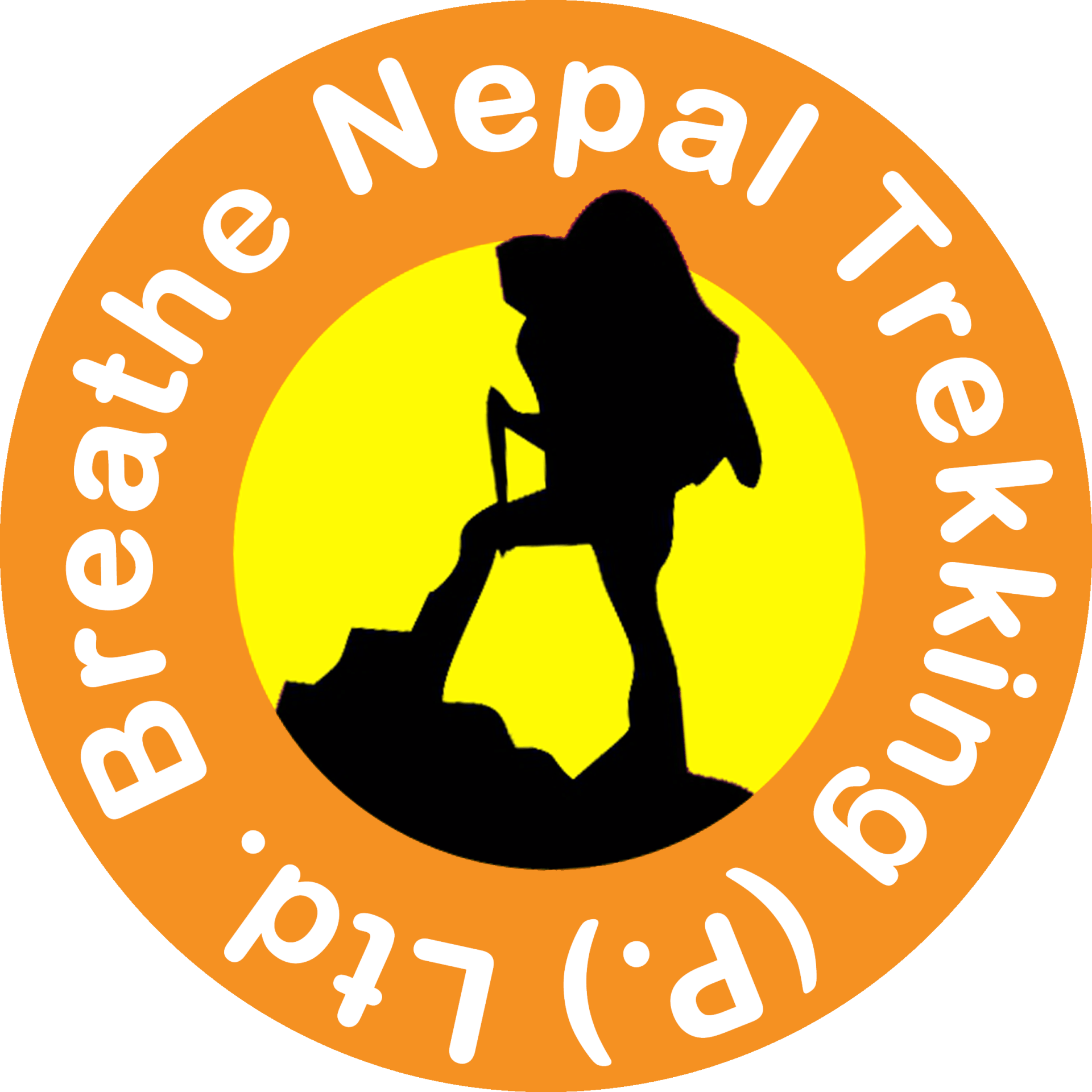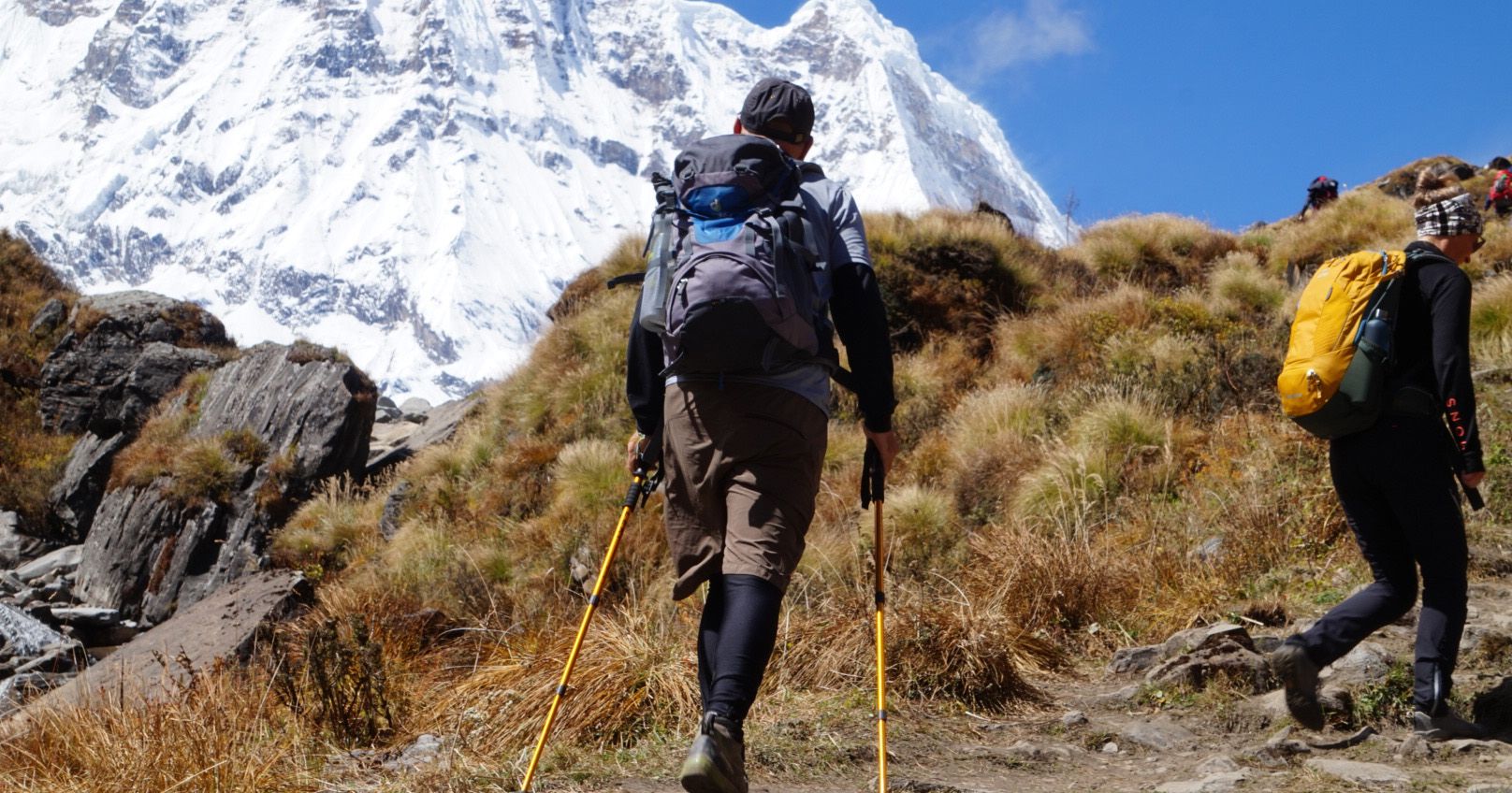Trekking Gear:
Should You Buy or Rent?
February 10, 2025
Pokhara serves as the starting point for some of Nepal’s most breathtaking treks, including the Annapurna Base Camp trek, the Annapurna Circuit trek, and the Poon Hill trek. A key decision you need to make as a trekker is whether to bring your trekking gear, buy or rent it in Pokhara.
Many experienced trekkers prefer bringing their own gear, ensuring they have high-quality, well-fitted equipment they trust. This is particularly important for trekking boots, backpacks, and technical clothing that must be comfortable for long hikes. However, carrying bulky gear from home can be inconvenient, especially if you are traveling on an extended trip with limited luggage space.
On the other hand, many travelers choose to pack light and acquire their trekking gear upon arrival in Pokhara. With numerous rental and outdoor shops, it’s easy to find essentials like sleeping bags, down jackets, and trekking poles at affordable prices. Renting is a great option if you are trekking only once, while buying can be a smart investment if you plan multiple treks in Nepal or other mountain regions.
Making the right choice depends on factors like budget, trip duration, and long-term trekking plans. Whether you bring your trekking gear from home or decide to buy or rent in Pokhara, ensuring you have quality equipment is key to a comfortable and safe trek in the Annapurna region.
Buying Trekking Gear: Pros and Cons
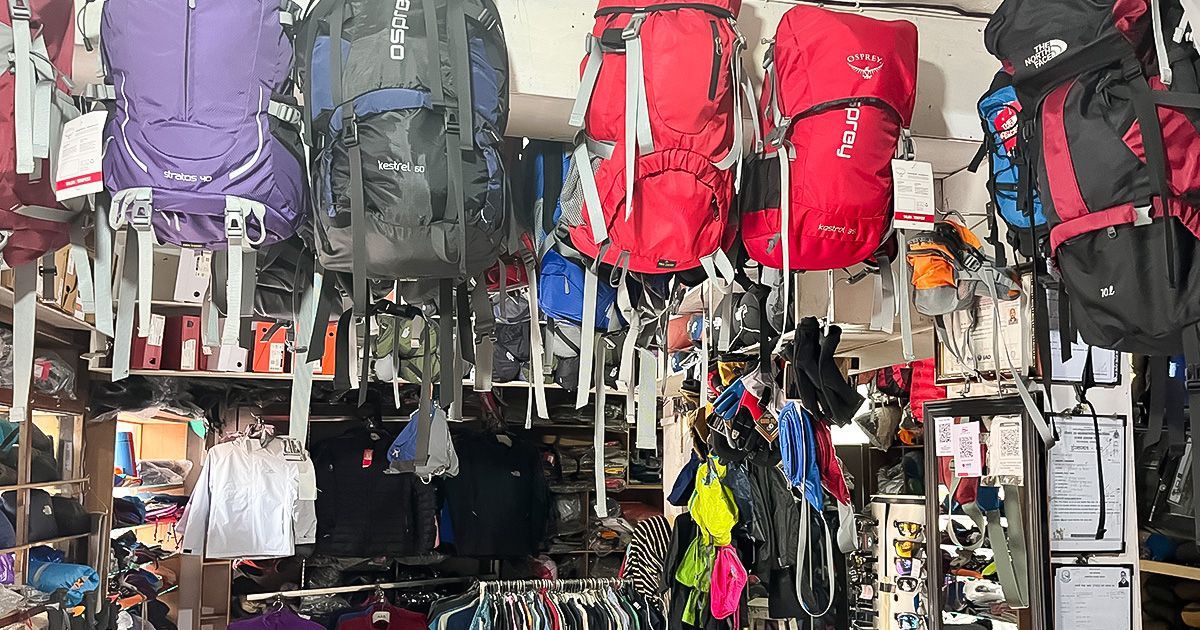
Pros of Buying Trekking Gear:
- Personalized Fit & Comfort: Owning gear ensures a perfect fit, reducing discomfort and the risk of blisters or injuries.
- Long-Term Investment: If you plan on multiple treks or outdoor adventures, buying gear can be more cost-effective in the long run.
- Hygiene & Quality Assurance: Your personal equipment will be cleaner and well-maintained compared to rental gear.
- Availability & Familiarity: Having your own gear means you don’t need to spend time renting, and you’ll be familiar with how it functions.
Cons of Buying Trekking Gear:
- High Initial Cost: Buying high-quality trekking gear can be expensive, especially for premium brands.
- Luggage Weight & Space: Carrying bulky trekking gear, especially when traveling internationally, can be inconvenient.
- Storage & Maintenance: If you don’t trek often, storing and maintaining gear may not be practical.
Renting Trekking Gear: Pros and Cons
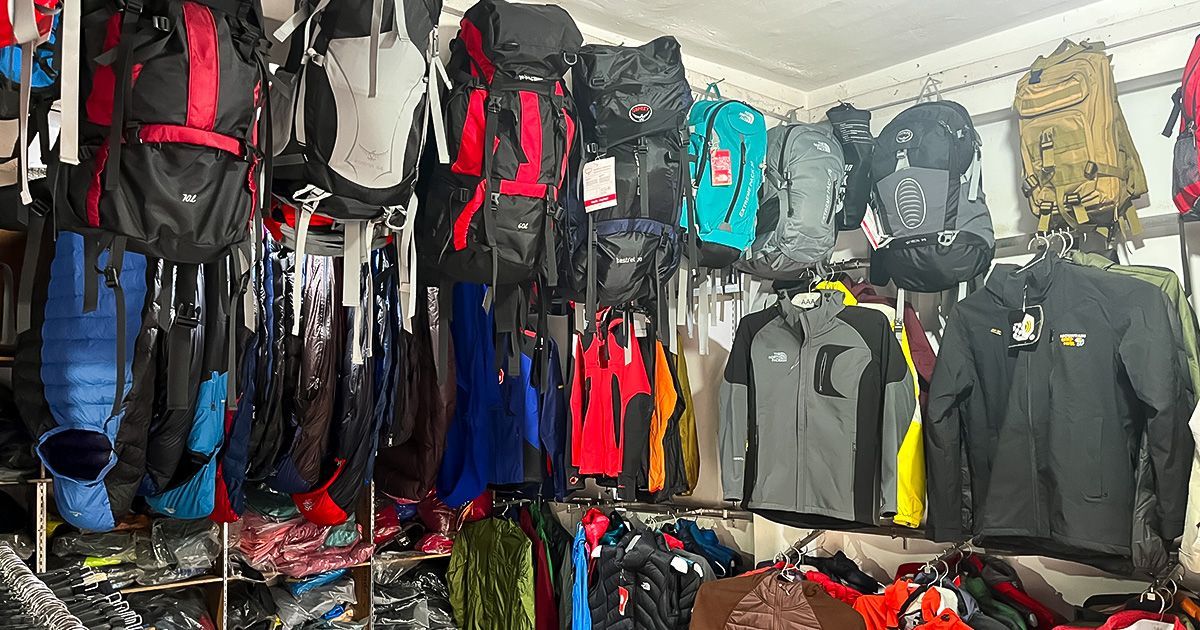
Pros of Renting Trekking Gear:
- Cost-Effective for Short Trips: Renting is significantly cheaper than buying if you’re trekking only once or twice.
- No Storage Hassles: Once your trek is over, you don’t have to worry about storing bulky gear.
- Travel Light: Renting in Pokhara allows you to travel with minimal luggage, reducing airline baggage fees.
- Try Before You Buy: Renting lets you test different gear brands and styles before committing to a purchase.
- Convenient for World Travelers: Many tourists visiting Nepal are on a world journey and don’t have the right trekking gear with them. Renting allows them to quickly get what they need without carrying unnecessary weight.
Cons of Renting Trekking Gear:
- Limited Availability of Premium Gear: Rental shops may not always have high-quality or well-maintained gear.
- Hygiene Concerns: Sleeping bags, gloves, and down jackets may not always be cleaned thoroughly.
- Unfamiliar Equipment: Using unfamiliar rental gear might take time to adjust and could lead to discomfort.
- Additional Costs Over Time: If you trek often, repeated rentals can add up and become more expensive than buying.
What Trekking Gear Should You Buy vs. Rent?
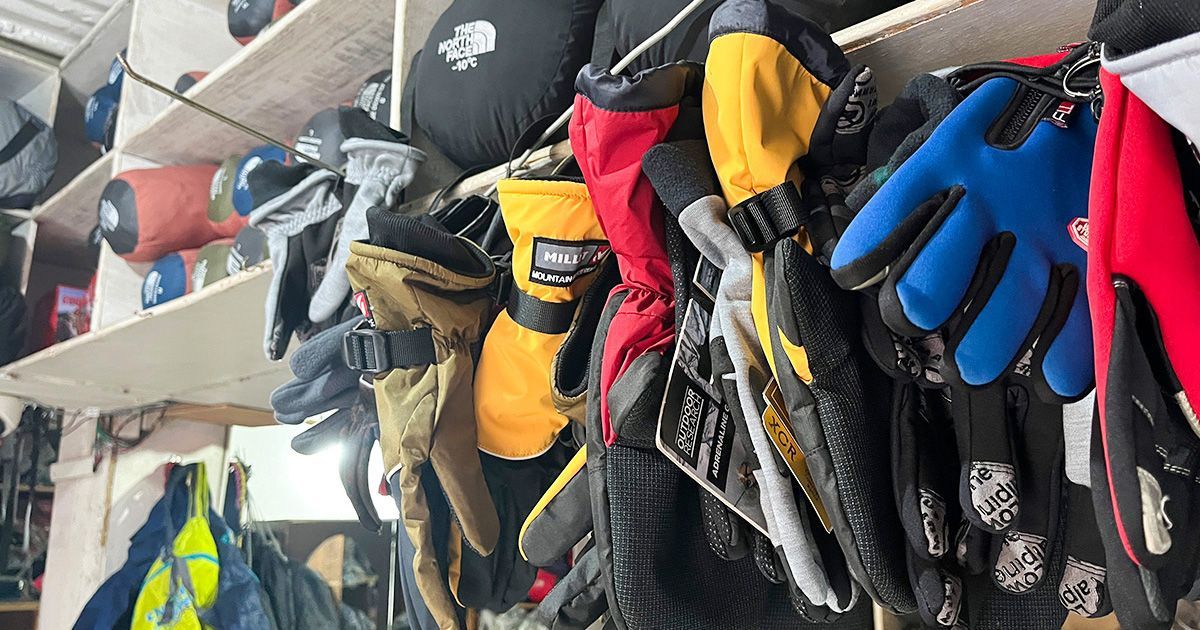
Trekking Gear to Buy:
- Trekking boots (for a proper fit and comfort)
- Base layers (for hygiene reasons)
- Socks and gloves
- Backpack (if you trek frequently)
- Sunglasses (personal preference)
Trekking Gear to Rent:
- Sleeping Bag
– Ideal for high-altitude treks like Annapurna Base Camp (ABC).
Price: $2.00 – $3.00 per day - Down Jacket
– Bulky and expensive to buy, making rental a great option.
Price: $3.00 – $5.00 per day - Crampons
– Needed for specific treks in Annapurna during winter conditions.
Price: $2.00 – $2.50 per day - Duffel Bag
– Commonly used for helper-assisted treks.
Price: $1.00 – $2.00 per day - Hiking Sticks
– Useful for added stability on rugged trails.
Price: $1.00 – $1.50 per day
Where to Buy or Rent Trekking Gear in Pokhara?
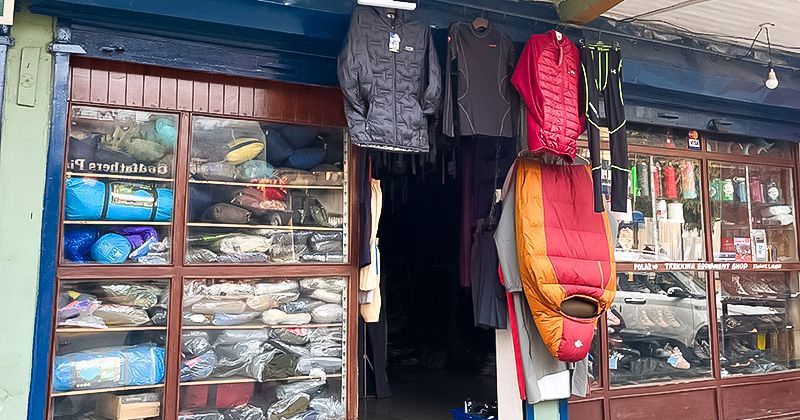
Pokhara has numerous shops offering trekking gear for rent and purchase, making it a convenient place to get equipped for your Annapurna adventure. Along Lakeside, especially on the main street, you’ll find a variety of stores providing everything from sleeping bags and down jackets to hiking poles and crampons.
With so many options available, it can be overwhelming to find the right shop. Whether you need high-quality gear for a multi-day trek or a budget-friendly rental for a short hike, we can help you with both buying and renting the best equipment to suit your needs.
Conclusion:
If you’re an occasional trekker or traveling light, renting in Pokhara is the best option. However, if you love trekking and plan on future expeditions, investing in high-quality gear is a smart choice. Whatever you decide, ensure your gear is suitable for the diverse trekking conditions in the Annapurna region.
